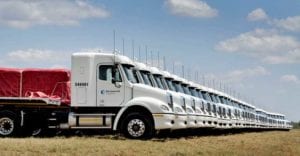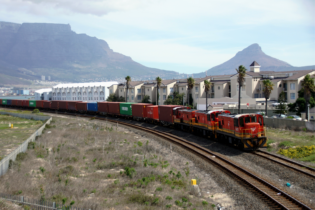As a global company with ships calling at ports in Africa, Europe, the Far East, India and the Americas, Safmarine had not withdrawn any ships from service despite a downturn that has affected most of the industry, Grant Daly, its chief executive, said yesterday.
But although the markets in the Far East and India were strong and their trade with Africa was thriving, the entire industry had been affected by the euro zone troubles and the dampening of the US economy, and freight rates had been cut to “less than would have been paid in 1995”, he said. Safmarine’s sister company, Maersk, has 9 percent of its capacity out of service at present while 294 vessels in the entire industry have been laid up, with 19 percent less capacity in use on trade between Europe and Asia. However, Daly said, though China’s international trade had been affected by a fall in demand from its main export markets, growing consumer demand in its domestic market had meant only a slowing in its growth rate, to between 10 percent and 7 percent. Safmarine, originally a South African company, was taken over by Scandinavian group AP Moller-Maersk several years ago although it retains its individual character and is under separate management. It is now based in Copenhagen where it moved last year from Belgium to share a head office, and the costs of running it, with Maersk. It retains a large office and staff at Cape Town’s V&A Waterfront, headed by Jonathan Horn, manager of its South African cluster and, Daly said, South Africa and other parts of Africa accounted for “a significant proportion” of its cargo. He said 90 percent of South Africa’s exports and imports came by sea, a large proportion of this with Safmarine. Its distinctive white container ships call regularly at Cape Town, Port Elizabeth and Durban.But the last of its ships to be listed on the South African registry of shipping, the Oranje, was deleted from the list in January last year. The ships in the Safmarine fleet are now on the registers of the UK, Belgium, Hong Kong and Singapore.
It is now an official policy of the South African ministry of transport to attract shipping back to the South African registry and rebuild the country’s reputation as a maritime nation. Daly said Safmarine was working with both the Department of Transport and the National Treasury in exploring opportunities to make the ship register more attractive and globally competitive. But, he explained, it was a matter of costs; it was not economically viable at present. However, the company had committed itself to “revisit the flagging of our vessels once the South African government has addressed issues such as mortgage ranking and tonnage tax”. South Africa would have to offer attractive legislation and tax incentives and “revisit the labour legislation as it pertains to ship owners”. Discussing the impact of shipping on the environment, he said the Safmarine group was continually implementing cleaner technologies. On average, a large container ship emitted about 40 times less carbon dioxide than a large freight aircraft and more than three times less than a heavy truck while transporting a much larger cargo. It had invested heavily in modern tonnage and six new ships would join the fleet this year. Source: iol.co.zaImage: seanews.com








